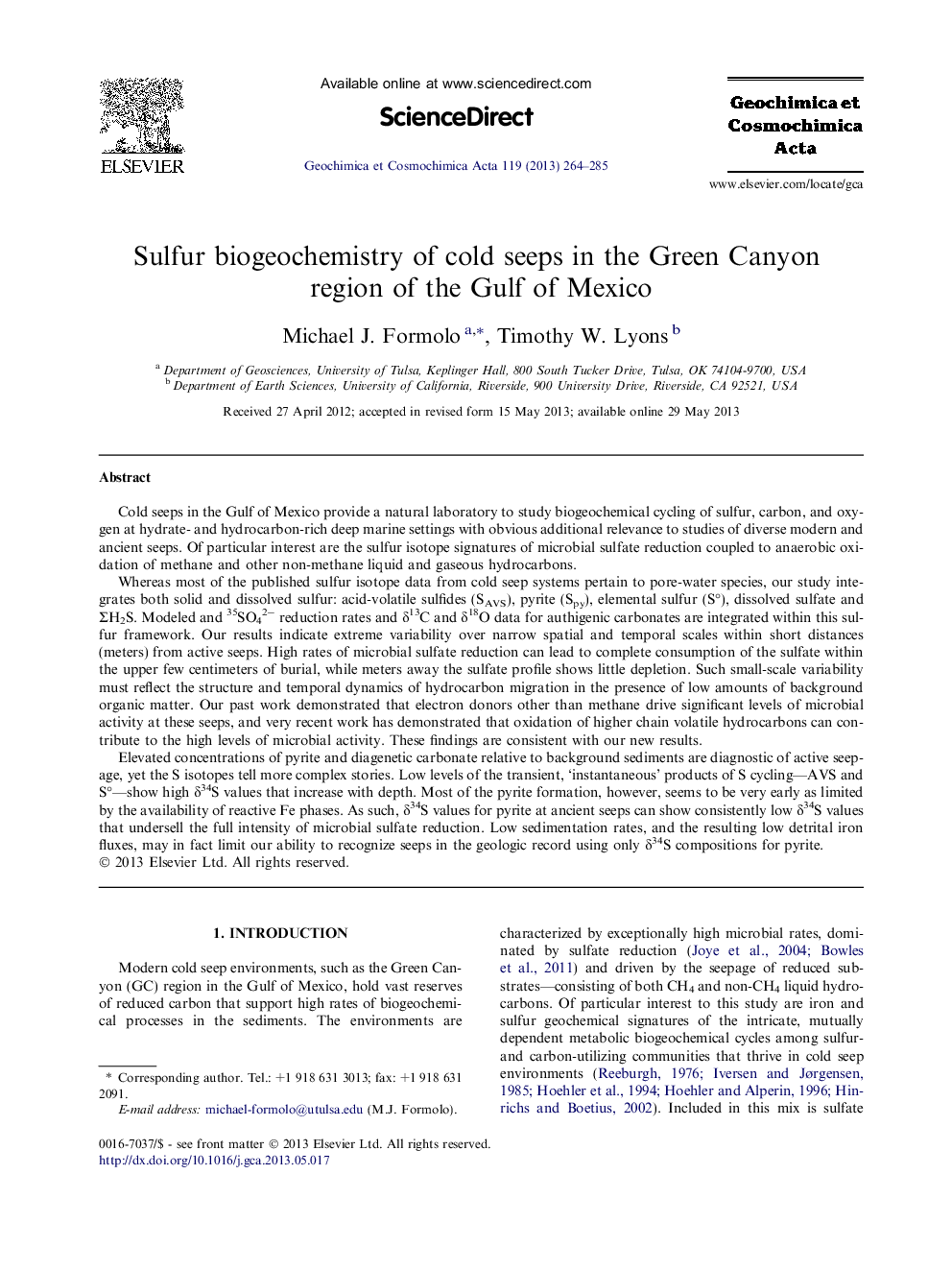| کد مقاله | کد نشریه | سال انتشار | مقاله انگلیسی | نسخه تمام متن |
|---|---|---|---|---|
| 4702314 | 1638038 | 2013 | 22 صفحه PDF | دانلود رایگان |
Cold seeps in the Gulf of Mexico provide a natural laboratory to study biogeochemical cycling of sulfur, carbon, and oxygen at hydrate- and hydrocarbon-rich deep marine settings with obvious additional relevance to studies of diverse modern and ancient seeps. Of particular interest are the sulfur isotope signatures of microbial sulfate reduction coupled to anaerobic oxidation of methane and other non-methane liquid and gaseous hydrocarbons.Whereas most of the published sulfur isotope data from cold seep systems pertain to pore-water species, our study integrates both solid and dissolved sulfur: acid-volatile sulfides (SAVS), pyrite (Spy), elemental sulfur (S°), dissolved sulfate and ΣH2S. Modeled and 35SO42− reduction rates and δ13C and δ18O data for authigenic carbonates are integrated within this sulfur framework. Our results indicate extreme variability over narrow spatial and temporal scales within short distances (meters) from active seeps. High rates of microbial sulfate reduction can lead to complete consumption of the sulfate within the upper few centimeters of burial, while meters away the sulfate profile shows little depletion. Such small-scale variability must reflect the structure and temporal dynamics of hydrocarbon migration in the presence of low amounts of background organic matter. Our past work demonstrated that electron donors other than methane drive significant levels of microbial activity at these seeps, and very recent work has demonstrated that oxidation of higher chain volatile hydrocarbons can contribute to the high levels of microbial activity. These findings are consistent with our new results.Elevated concentrations of pyrite and diagenetic carbonate relative to background sediments are diagnostic of active seepage, yet the S isotopes tell more complex stories. Low levels of the transient, ‘instantaneous’ products of S cycling—AVS and S°—show high δ34S values that increase with depth. Most of the pyrite formation, however, seems to be very early as limited by the availability of reactive Fe phases. As such, δ34S values for pyrite at ancient seeps can show consistently low δ34S values that undersell the full intensity of microbial sulfate reduction. Low sedimentation rates, and the resulting low detrital iron fluxes, may in fact limit our ability to recognize seeps in the geologic record using only δ34S compositions for pyrite.
Journal: Geochimica et Cosmochimica Acta - Volume 119, 15 October 2013, Pages 264–285
